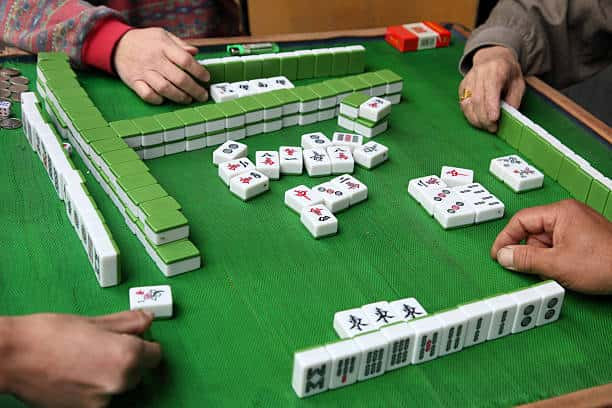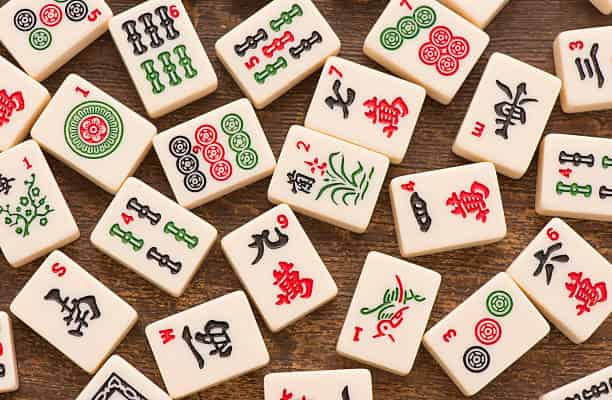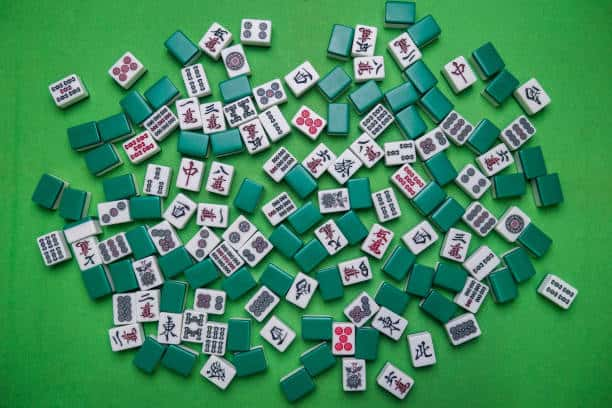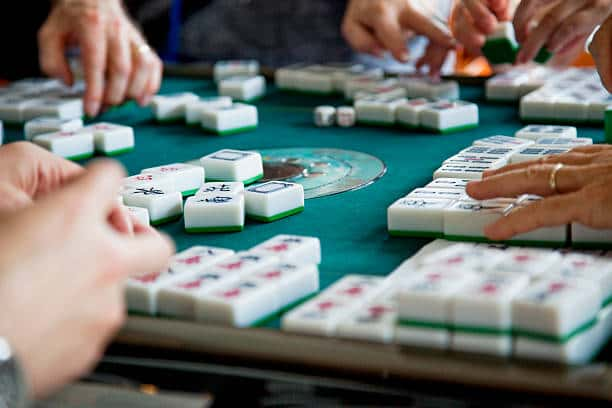Introduction
Brief History of Japanese Mahjong
Mahjong is a game that originated in China during the Qing dynasty. It spread throughout the world and has been adapted to different cultures, including Japan.
Japanese Mahjong, also known as Riichi Mahjong, evolved from the Chinese version and has become popular not only in Japan but also in other parts of Asia and around the world. Japanese Mahjong differs from its Chinese counterpart in its rules and gameplay mechanics.
It is a fast-paced game that involves strategy, skill, and some luck. The goal is to create a winning hand by collecting sets of tiles with specific combinations worth points.
Importance of Understanding the Game's Rules and Strategies
As with any game or sport, it is important to understand the rules to play effectively. In Japanese Mahjong, knowing how to properly build your hand while following specific yaku (scoring combinations) will increase your chances of winning.
Understanding tile probabilities will also help you make better decisions during gameplay. Strategies are equally important when playing Japanese Mahjong.
Knowing when to call Riichi (declaring ready) or when to play defensively can make all the difference between winning or losing a game. Proper table manners are equally important as etiquette plays an essential role in maintaining good sportsmanship among players.
In this guide, we will provide an overview of Japanese Mahjong’s basic rules along with tips on how to improve your gameplay skills through advanced techniques and strategy. We will also highlight some resources for further learning so that you can continue honing your skills even after reading this guide.
Basic Rules of Japanese Mahjong
Tile Types and Sets
Japanese Mahjong is played with a set of 136 tiles, each of which belong to one of three categories: Suited Tiles, Honor Tiles, and Terminal or Honor Pair Tiles. Suited Tiles are divided into three different suits – Bamboo (pin), Circles (sou) and Characters (wan), while the Honor Tiles consist of Winds (East, South, West, North) and Dragons (Green Dragon, Red Dragon, White Dragon).
The Terminal or Honor Pair tiles are known as “yaochu”, consisting of 1’s & 9’s from each suit along with the honor tiles. A complete set would include four copies of each tile.
Winning Conditions and Scoring System
The objective in Japanese Mahjong is to create a winning hand consisting of four sets (melds) and one pair. The game can be won through several different conditions such as Tsumo or Ron. Winning by Tsumo occurs when you draw the tile that completes your hand.
Winning by Ron means that you claim another player’s discard that completes your hand. Each type of win has its own unique points associated with it.
Scoring in Mahjong is based on specific yaku combinations created in a player’s hand along with bonus points for dora indicators on certain tiles. The point system can be fairly complex but understanding it is crucial to successfully playing the game.
Turn Order and Gameplay Mechanics
In Japanese Mahjong players take turns drawing one tile from the wall until they have a complete hand or someone wins by completing their hand first through Tsumo or Ron. Players can also choose to pass on their turn if they do not wish to draw a tile. During their turn players have several options: draw a tile from the wall, claim another player’s discarded tile, or declare riichi if their hand is one tile away from completion.
At certain points in the game, players can also call pon (claiming a third identical tile from another player’s meld), chi (claiming a sequential run of three tiles from another player’s meld), or kan (declaring a fourth identical tile to make an additional meld). The game proceeds clockwise with each player taking their turn until one person wins and the round ends.
Strategies for Winning at Japanese Mahjong
Understanding Tile Probabilities and Hand Building Techniques
In Japanese Mahjong, understanding the likelihood of drawing certain tiles is crucial to building a winning hand. The game is played with a set of 136 tiles, divided into several suits and honor tiles.
Knowing the distribution of these tiles is key to building strong hands. One important concept in tile probabilities is “tanki,” or being one tile away from completing a winning hand.
Players who are tanki often seek out specific tiles to complete their hands. It’s important to be aware of which tiles are already discarded or declared by other players, as this will affect your chances of drawing the necessary tile.
Another technique for building strong hands is called “chanta.” This involves having sets or sequences that include all three types of terminal tiles: 1s and 9s from each suit, plus honor tiles like winds and dragons. Having a chanta hand can increase the number of scoring combinations available.
Reading Opponents' Discards and Playing Defensively
To win at Japanese Mahjong, it’s not just about building your own hand – it’s also about preventing your opponents from doing so. One way to achieve this goal is by carefully observing what your opponents discard.
If you notice an opponent discarding multiple copies of the same tile, this may indicate that they are trying to build a particular type of hand. In this case, you might want to hold onto similar tiles yourself, in order to prevent them from completing their hand.
On the other hand, if an opponent discards random or seemingly unrelated tiles, they may be trying to throw off other players’ impressions of their hand – especially if they’re close to completion. In this situation, it may be best to focus on building your own hand rather than trying to block theirs.
Knowing When to Call Riichi
One of the most important strategic moves in Japanese Mahjong is calling riichi, or declaring ready. This is done when a player is one tile away from completing their hand, and they choose to sacrifice their next turn in order to increase the potential payout if they win. There are several factors to consider when deciding whether or not to call riichi.
One is the cost of doing so – players must pay an additional 1,000 points to declare ready. Another factor is the likelihood of drawing a winning tile – if there are many possible tiles that could complete your hand, it may be worth waiting a bit longer before declaring ready.
It’s important to consider how likely your opponents are to catch on if you call riichi repeatedly. If your opponents know that you’re frequently close to completion but are unable to win, they may become more cautious about discarding certain tiles or even intentionally blocking you from completing your hand.
Advanced Techniques in Japanese Mahjong
Identifying Yaku
In Japanese Mahjong, yaku refers to scoring combinations that can add points to your hand. There are various types of yaku, and identifying them can be key to winning the game. Some examples of yaku include Tanyao (All Simples), Chinitsu (Pure Terminal or Honor), and Toitoi (All Pungs).
Each yaku has a different point value and can affect the outcome of the game. One important thing to note is that not all hands in Mahjong will have a yaku.
It’s crucial to plan your hand early on in the game with the goal of achieving one or more yaku. Reading what tiles your opponents discard and paying attention to open sets on the table can help you determine which possible combinations are still available for your hand.
Utilizing Dora to Increase Score Potential
Dora tiles are bonus tiles that increase a player’s score when they appear in their winning hand. They’re randomly determined at the start of each round by flipping over one tile from the dead wall and revealing its successor as a Dora indicator. Any tile with the same number or type as this indicator is treated as a Dora tile – meaning it will increase your score if it appears in your winning hand.
It’s essential to keep track of which tiles are revealed as Dora indicators throughout each round because they can significantly impact gameplay strategy and point totals. For example, if multiple Dora indicators have been revealed, it may be beneficial to hold onto certain tiles rather than discarding them if they have potential use within those sets.
Playing With a Specific Strategy Based on Seat Position
The concept of “seat winds” plays an important role in Mahjong strategy and gameplay. Each seat position has a designated wind, which rotates clockwise as the game progresses. Understanding how to play according to your seat position and wind can give you an advantage in the game.
For example, players sitting in East (Ton) position have a higher point value for winning hands than those in other positions. Therefore, they may want to aim for higher-scoring hands rather than settled for smaller ones.
Additionally, players sitting in South (Nan) position have the advantage of going first in each round – allowing them to get rid of unwanted tiles and dictate the flow of gameplay early on. Overall, utilizing advanced techniques like identifying yaku, utilizing Dora tiles, and playing according to seat position can greatly improve your Mahjong gameplay strategy and increase your chances of winning.
Etiquette in Japanese Mahjong
Japanese Mahjong is not just a game, it is a cultural institution that is steeped in tradition and respect. As such, there are a number of etiquette rules that players are expected to follow while playing the game. These rules not only help to keep the game fair and enjoyable for all involved, but also show respect for the other players at the table.
Proper Table Manners and Behavior During Gameplay
One of the most important aspects of playing Japanese Mahjong is having proper table manners. This means taking care not to damage or mishandle the tiles, as well as being respectful towards your fellow players.
Here are some tips on proper table manners for Japanese Mahjong:
No slamming: avoid slamming your tiles down on the table when discarding or drawing.
No leaning: do not lean on or touch any part of the table during gameplay.
Avoid distractions: refrain from talking too loudly or engaging in distracting behavior during gameplay.
No peeking: do not peek at other players’ tiles during gameplay, as this can be considered cheating.
Handling Disputes or Disagreements During the Game
In any game, disputes can arise between players over various issues. In Japanese Mahjong, however, it is important to handle these disputes in a way that respects both yourself and your fellow players.
Here are some tips on handling disputes or disagreements during a game of Japanese Mahjong:
Avoid arguing: try to avoid getting into arguments with other players over small issues.
Sit out if necessary:if you feel that a dispute is getting out of hand, you may need to sit out for a few rounds until the situation has cooled down.
Call over a moderator:if a dispute cannot be resolved between players, call over a moderator or an impartial third party to help resolve the issue.
By following these simple etiquette rules for Japanese Mahjong, you can help ensure that the gameplay experience is enjoyable and respectful for all involved.
Resources for Learning More About Japanese Mahjong If you’re interested in learning more about Japanese Mahjong, there are a variety of resources available to help you improve your game.
Whether you prefer to read books, browse websites, or use mobile apps, there’s something out there for everyone. Here are some recommendations:
Books
There are several great books available that provide detailed explanations of the various aspects of Japanese Mahjong. One highly recommended title is “The Game of Mah Jong Illustrated” by Patricia A. Thompson and Betty Maloney. This book covers everything from basic gameplay mechanics to advanced strategies and is a great resource for both beginners and experienced players alike.
Another popular book on the subject is “Japanese Mah Jongg Made Simple” by Scott D. Miller. This book provides clear and concise explanations of the rules and scoring system of Japanese Mahjong, as well as tips for improving your gameplay.
Websites
There are also many websites dedicated to teaching people how to play Japanese Mahjong. One great resource is mahjong.guide which offers an extensive set of rules with detailed examples along with strategies and terminology used in the game. Another website worth checking out is osamuko.com which offers articles on strategy, rules clarification, news about professional play along with video streaming services.
Mobile Apps
If you prefer to learn on-the-go via mobile apps, there are several options available for both iOS and Android devices. The most popular app among players is called Tenhou (available at tenhou.net). It has a simple interface that allows players around the globe to compete in real-time games in varying settings.
For those looking for an app that features tutorials on how to play along with practice modes against computer opponents then ‘Riichi’ app (available at riichi-app.com) might be better suited. Opportunities to Play with Others Online or In Person
Learning how to play Japanese Mahjong is one thing, but finding opportunities to put your skills into practice is another. Fortunately, there are plenty of ways to play with others both online and in person.
Online Play
One of the most popular online platforms for playing Japanese Mahjong is Tenhou (tenhou.net), mentioned earlier, which allows players from around the world to compete against each other in real-time games. Another option is Mahjong Time (mahjongtime.com) which hosts tournaments and cash games with a variety of rule sets including Japanese mahjong.
For those who prefer mobile apps, there are also options for playing online. The aforementioned ‘Riichi’ app gives players plenty of chances to test their skills against computer opponents or other players from around the world.
In-Person Play
If you prefer playing with others face-to-face then there are a variety of options available as well. Check out local game stores or community centers for clubs and events that offer Japanese Mahjong gatherings.
There might be dedicated clubs in your area like the U.S. Professional Mahjong League (usml.net) that promotes competitive play and sponsors various events throughout the year. It’s a great way to meet fellow enthusiasts and improve your game through meaningful interaction with skilled players.
If you’re feeling adventurous then why not organize your own mahjong night at home? Gather some friends together for an evening of food, drinks, and fun while putting your learned skills into practice in an environment that suits you best!
Conclusion
Japanese Mahjong is an exciting and challenging game that requires a combination of strategy, skill, and luck to win. As we have seen in this guide, it is important to understand the basic rules of the game, including tile types and sets, winning conditions and scoring system, turn order and gameplay mechanics.
Having a solid foundation in these rules will allow you to start building your own winning strategy. Furthermore, we explored some strategies for winning at Japanese Mahjong including understanding tile probabilities and hand building techniques.
We also covered how to read opponents’ discards and play defensively when necessary. Additionally, knowing when to call Riichi (declaring ready) can help increase your chances of winning significantly.
For those who are looking for more advanced techniques in Japanese Mahjong can identify yaku (scoring combinations) or utilize Dora (bonus tiles) to increase score potential. Playing with a specific strategy based on seat position can also be helpful once you have mastered the basics.
Remember that playing with proper etiquette during the game is crucial for maintaining a healthy gaming environment. While playing with others online or in person can be an excellent way to learn more about the game and improve your strategy.
Overall, Japanese Mahjong is a richly rewarding experience that offers endless entertainment opportunities for players of all levels of expertise. Whether you are just starting out or are already a seasoned veteran of the game, there is always something new to learn about this fascinating pastime!





